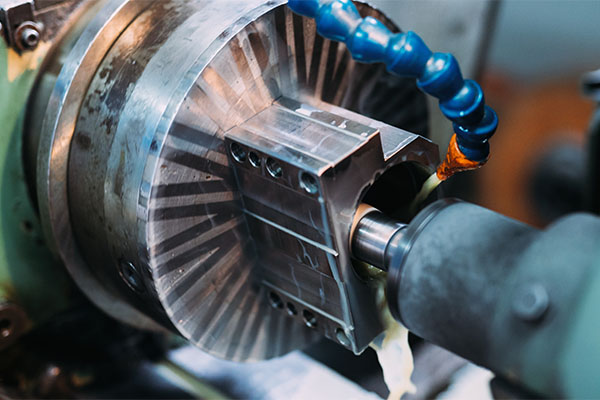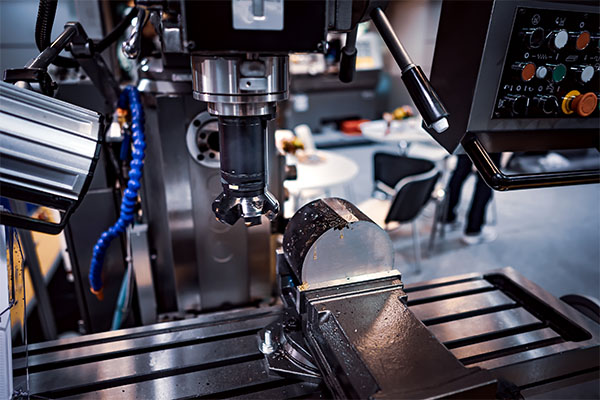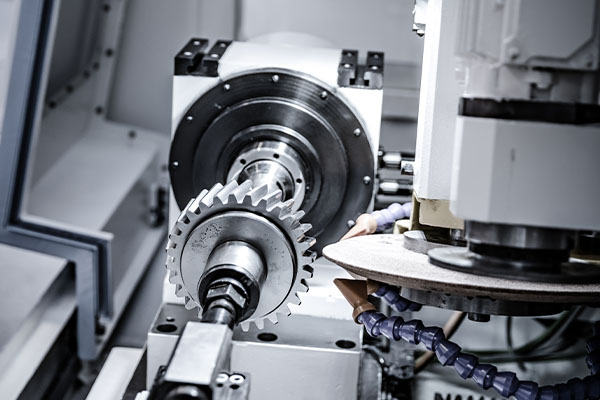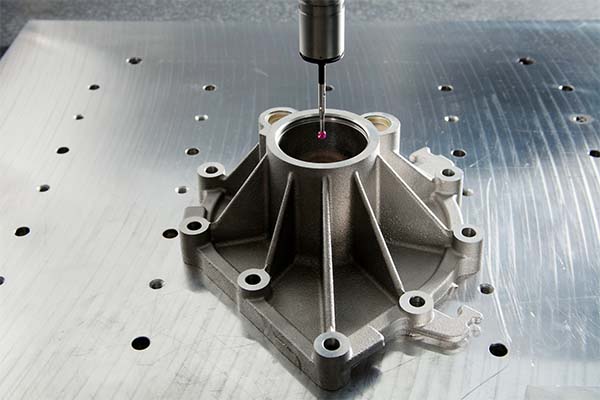Introduction to CNC Machining Tolerances
CNC machining is one of the most precise methods of manufacturing, capable of producing parts with high accuracy and repeatability. However, a critical factor in CNC machining is the concept of tolerances, which define the allowable variations in part dimensions. Tolerances are essential to ensure that parts fit and function correctly in their final assembly, especially when dealing with custom orders. Understanding the different types of tolerances and how they affect the machining process is crucial for manufacturers and customers alike. In this guide, we will explore the key aspects of CNC machining tolerances, including their types, factors influencing them, and how to optimize them for cost-efficiency and precision.

What Are CNC Machining Tolerances?
Defining Tolerances in CNC Machining
Tolerances are the permissible limits of variation in a part’s dimensions. In CNC machining, this refers to how much a given part’s actual dimensions can differ from the intended design dimensions while still being acceptable for function. Essentially, tolerances define the range within which the part can vary, and it ensures that the part can still fit properly in its intended assembly.
There are two primary types of tolerances in CNC machining: dimensional tolerances and geometric tolerances. Dimensional tolerances refer to the allowable deviation from a specified measurement (such as length, width, and height), while geometric tolerances describe the acceptable deviations in the shape or form of a part (such as straightness, flatness, or roundness). These tolerances are crucial for ensuring that parts function correctly and are compatible with other components.
Why Tolerances Are Critical in CNC Machining
The precision of a CNC machine is largely determined by its ability to maintain tight tolerances. In industries such as aerospace, automotive, or medical devices, where components must fit together flawlessly, tolerances become even more significant. By specifying precise tolerances, manufacturers can ensure that parts meet the required functionality and are reliable under operational conditions.
In contrast, if tolerances are too loose, the final part might not meet the intended performance criteria, leading to costly errors or failures. On the other hand, overly tight tolerances can increase production costs and extend lead times unnecessarily. Striking the right balance is essential for achieving both quality and cost-efficiency.
Types of CNC Machining Tolerances You Should Know
Dimensional Tolerances
Dimensional tolerances define how much a part’s dimensions can vary from the intended measurement. These are the most commonly specified tolerances in CNC machining. For example, a shaft might need to have a length of 100mm, with a tolerance of ±0.1mm. This means the actual length could range from 99.9mm to 100.1mm and still be acceptable.
Dimensional tolerances can be applied to linear measurements (like the length, width, or height of a part) and angular measurements (such as the angles between features). The tighter the tolerance, the more precise the measurement needs to be, which often requires advanced CNC machines and more time to manufacture.
Geometric Tolerances
Geometric tolerances are used to control the shape, orientation, and location of features on a part. These tolerances are crucial for ensuring that parts fit together as intended. For example, a hole might need to be perfectly round or positioned at a precise location relative to other features on the part. Geometric tolerances include:
- Straightness: Ensures that a feature, like an edge or axis, is perfectly straight.
- Flatness: Ensures that a surface is level within a specified tolerance.
- Roundness: Ensures that a hole or cylindrical feature is perfectly circular.
- Position: Defines the exact location of a feature relative to others.
By specifying these geometric tolerances, designers can ensure that parts meet the required functional criteria.
Surface Finish Tolerances
Surface finish tolerances specify the smoothness of a part’s surface. In many applications, the surface quality can be critical for the part’s performance, especially for components that move or come into contact with other parts. Surface finish is often specified using roughness measurements such as Ra (average roughness), Rz (average maximum height), and Ry (maximum height of the profile).
Why Tolerances Matter: The Impact on Part Quality and Functionality
The Role of Tolerances in Part Functionality
When it comes to part functionality, the tolerances applied during the machining process can significantly impact whether or not the part will fit and function as intended. For example, in automotive or aerospace components, small deviations in part dimensions can affect how well parts interact, leading to issues such as poor fits, inefficiencies, or even failure under stress.
In some cases, a slight deviation in size or shape might not be a critical issue. However, for high-performance applications such as engine components, medical devices, or high-precision instruments, even the smallest tolerance violations could lead to costly errors and product failure. Therefore, understanding how to choose the right tolerance for each part is essential.
Tolerances and Part Quality Control
Tolerances directly impact the quality control process. Tight tolerances require more sophisticated equipment and higher levels of inspection, ensuring that parts meet strict standards. Quality control methods such as Coordinate Measuring Machines (CMM) or optical measurement systems are often employed to check that parts are within the specified tolerance range. The higher the tolerance, the more rigorous the inspection process becomes.

Factors Affecting CNC Machining Tolerances
Material Properties and Tolerances
The material chosen for the part has a significant influence on the tolerances that can be achieved. Some materials, like metals, may be more stable and easier to machine to tight tolerances, while others, like plastics or composites, may experience more deformation during machining. Material hardness, thermal expansion, and strength all play a role in how easily a material can maintain tight tolerances.
For example, metals such as stainless steel and aluminum are commonly used for CNC machining because they provide excellent dimensional stability and can achieve tight tolerances without excessive tooling wear. However, softer materials such as plastic or rubber may require special considerations to ensure accurate machining.
CNC Machine Capabilities
The type of CNC machine used also plays a crucial role in determining the level of precision that can be achieved. CNC machines have varying degrees of accuracy, and each machine has its own limitations when it comes to maintaining tight tolerances. High-precision machines such as those used in aerospace manufacturing can hold tolerances of ±0.001mm or even tighter, while general-purpose machines may only be able to achieve tolerances of ±0.05mm.
When choosing a machine, it is essential to match its capabilities to the requirements of the specific part being produced. Understanding the limits of your CNC equipment will help in selecting the right tolerance for the part and avoiding unnecessary adjustments that could drive up costs.
Tooling and Wear
The quality of the tooling and its wear over time can also influence the tolerances achieved in CNC machining. As tools wear down, they can cause slight variations in part dimensions. Regular maintenance and tool replacements are crucial to maintaining consistent precision.
To reduce the impact of tool wear, many manufacturers use advanced coatings or carbide tools that are designed to last longer and maintain their sharpness. Moreover, adjusting machining parameters such as speed, feed rate, and cutting depth can help improve the precision of the finished part.
Common CNC Machining Tolerance Ranges for Various Materials
Tolerances for Metal Parts
Metal parts are often required to meet very tight tolerances, especially in industries like aerospace and automotive. For instance, parts made from stainless steel may be machined to a tolerance of ±0.05mm, while parts made from aluminum might achieve tolerances as tight as ±0.025mm. These tolerances ensure that metal parts fit together correctly and perform well under demanding conditions.
Tolerances for Plastic Parts
Plastic parts, on the other hand, are generally more difficult to machine to the same tight tolerances as metals. The tolerance for plastic parts typically ranges from ±0.1mm to ±0.5mm, depending on the type of plastic and the complexity of the part. Plastics can be prone to warping, shrinkage, or expansion due to temperature changes, which can make it more challenging to maintain consistent tolerances.
In some cases, high-performance plastics such as PEEK or PTFE may be used for critical applications. These materials can achieve tighter tolerances but require more advanced machining techniques.
Tolerances for Composite Materials
Composite materials, which are often used in aerospace and automotive applications, present their own challenges when it comes to CNC machining. Composites are often layered and may have different properties depending on the direction of the fibers, which can cause variations in the part’s strength and dimensional stability. Tolerances for composite parts typically range from ±0.1mm to ±0.3mm, depending on the specific material and part geometry.
Selecting the Right Tolerances for Your Custom Machined Parts
Identifying the Tolerance Requirements
Choosing the right tolerances for your custom machined parts starts with understanding the specific function of the part. For example, parts that must fit together or interact with other components require tighter tolerances to ensure proper alignment and functionality. On the other hand, parts that do not require precise fitting may be designed with looser tolerances to reduce manufacturing costs.
To determine the optimal tolerance for a part, it’s essential to consider both the design requirements and the capabilities of the manufacturing process. Overly tight tolerances can increase production time, tooling costs, and the likelihood of errors, while too loose of a tolerance can compromise the function or quality of the part.
Balancing Precision and Cost
While it might be tempting to specify the tightest possible tolerances to ensure the highest level of precision, this often comes at a higher cost. Achieving tighter tolerances typically requires more advanced machinery, longer machining times, and increased inspection costs. For many parts, it is more cost-effective to specify tolerances that are adequate for the part’s intended function without going overboard on precision.
Striking the right balance between tolerance and cost is key to achieving both quality and efficiency in custom machining.
How Tolerances Impact CNC Machining Costs
The Relationship Between Tolerances and Manufacturing Costs
In CNC machining, there is a direct correlation between the tightness of the tolerance and the overall cost of production. Tighter tolerances generally require more advanced technology, increased precision, and more time to ensure the part is within specification. As a result, manufacturing costs tend to rise with the need for tighter tolerances. This is because more attention to detail is required at each step of the process, from initial design to final inspection.
For example, when machining a part with a tolerance of ±0.1mm, the machine may need to make more passes or use specialized tools to ensure the desired dimensions are achieved. This can increase machining time and material usage, both of which contribute to higher costs. On the other hand, a part with a tolerance of ±0.5mm may not require as much time or specialized equipment to produce, lowering the cost of production.
Additionally, parts with tighter tolerances often require more rigorous quality control and inspection. Depending on the application, this may involve using sophisticated tools such as Coordinate Measuring Machines (CMMs), laser scanning, or other high-precision measurement devices. The cost of these tools, along with the time spent inspecting each part, can add up quickly when producing components with very tight tolerances.
How Tolerances Influence Lead Time
Tolerances also affect the lead time for CNC machining projects. Parts with tighter tolerances require more careful planning and additional time for the machining process. For example, a part requiring a tolerance of ±0.01mm may take several hours longer to machine than a similar part with a tolerance of ±0.5mm.
The additional time needed to meet tighter tolerances can also delay the overall production timeline, especially in projects with multiple parts or complex geometries. Furthermore, if machining errors occur during the process, they may need to be corrected, leading to additional rework and further extending the lead time.
To minimize the impact of tight tolerances on lead time, manufacturers often need to carefully plan and optimize the machining process. This may involve selecting the right machines, adjusting cutting parameters, and using the most efficient tool paths to ensure the part is completed on schedule.
Understanding the Limits of Your CNC Equipment and Tools
CNC Machine Precision and Its Impact on Tolerances
The capabilities of the CNC equipment being used are a crucial factor in determining the level of precision that can be achieved during the machining process. Different types of CNC machines have varying degrees of accuracy, and it’s important to understand the limitations of the machines in use to avoid setting unrealistic tolerance expectations.
For instance, high-end CNC mills or lathes used in aerospace or medical industries can achieve tolerances as tight as ±0.001mm. These machines use advanced technologies such as multi-axis milling, laser calibration, and real-time feedback systems to maintain extreme precision.
On the other hand, general-purpose CNC machines may not be capable of maintaining such tight tolerances, and the achievable accuracy might only be ±0.05mm or ±0.1mm. It is essential to match the required tolerances of the part to the capabilities of the available CNC equipment to ensure that production is both feasible and cost-effective.
Choosing the Right CNC Machine for the Job
Selecting the right CNC machine for the job is vital for achieving the desired tolerance. For example, if the required tolerance is tight and the part has complex geometries, it may be necessary to invest in high-precision machines, such as CNC Swiss lathes or 5-axis mills. These machines offer the ability to machine complex parts with minimal error, but they come with higher upfront costs and longer production times.
However, for simpler parts with looser tolerances, a standard CNC milling machine may suffice. Choosing the right machine based on the required tolerances can help streamline production, reduce costs, and ensure that the part meets quality standards.
Tooling and Tool Wear
The quality and condition of the tools used in CNC machining also play a significant role in the accuracy of the final product. Over time, tools can wear down, resulting in dimensional variations and deviations from the specified tolerances. Therefore, regular maintenance and timely replacement of tools are critical for maintaining consistent results, especially when machining parts to tight tolerances.
Additionally, the material and coating of the tooling can affect its longevity and precision. Carbide tools, for instance, tend to maintain their sharpness and dimensional stability over time, making them a preferred choice for high-precision CNC machining. Coated tools, such as those with titanium nitride (TiN) or diamond-like carbon (DLC) coatings, can also help reduce wear and extend tool life, which is especially important when machining difficult materials or producing parts with tight tolerances.

Optimizing Tolerances for Faster Turnaround Times and Reduced Costs
Balancing Precision with Efficiency
While tight tolerances are necessary for certain applications, they can lead to longer lead times and higher production costs. Therefore, one of the key challenges in CNC machining is finding the right balance between precision and efficiency. Achieving the required tolerances while keeping production costs down and maintaining a quick turnaround time is essential for meeting customer demands and staying competitive in the market.
One way to optimize tolerances while maintaining efficiency is by focusing on the critical dimensions of the part. Not all features of a part need to meet the tightest tolerances. By identifying which dimensions are most important for the part’s functionality and only applying tighter tolerances where necessary, manufacturers can reduce machining time and costs without compromising the performance of the part.
Streamlining the Machining Process
To optimize machining time and reduce costs, manufacturers should also consider streamlining the machining process. This can be achieved by selecting the right machining strategies, such as using the most appropriate cutting tools, adjusting feed rates, and optimizing tool paths. CNC machines that feature advanced automation capabilities, such as tool changers or automated loading systems, can also help reduce the time spent on non-productive tasks, further speeding up the process.
Another effective way to optimize tolerances is by employing advanced manufacturing techniques like additive manufacturing or hybrid machining. These methods can often achieve the same level of precision as traditional CNC machining while reducing material waste, tool wear, and production time.
Real-World Examples of Tolerance Challenges and Solutions
Case Study 1: Aerospace Component with Tight Tolerances
In aerospace manufacturing, parts such as engine components and structural elements must meet extremely tight tolerances to ensure safety and performance. One real-world example involved a custom machined aluminum bracket used in an aircraft’s landing gear system. The tolerance required for this part was ±0.01mm, which posed a challenge due to the material’s potential for thermal expansion and the intricate geometry of the design.
To meet the tight tolerance requirements, the manufacturer used a high-precision 5-axis CNC machine with laser calibration. Additionally, they implemented a multi-step machining process that included precision roughing, semi-finishing, and finishing operations. The part was also subjected to several rounds of quality control using a Coordinate Measuring Machine (CMM) to ensure it met the required specifications.
Case Study 2: Medical Device Component with Complex Geometries
In the medical device industry, components such as surgical instruments and implants require high precision to ensure they function correctly and safely. One example involved the machining of a titanium knee implant, which required complex geometric tolerances, including precise roundness and positional tolerances for the holes that would house the screws.
To achieve these tolerances, the manufacturer used a CNC Swiss lathe with live tooling capabilities. This allowed them to machine the part in a single setup, reducing the risk of errors caused by repositioning. The part was then inspected using a high-precision optical measurement system to ensure that all geometric tolerances were met.
Quality Control: Ensuring Accuracy and Consistency in CNC Machining
The Importance of Rigorous Inspection
Quality control plays a vital role in ensuring that parts are within the specified tolerances and meet the required standards. In CNC machining, inspection begins during the setup process and continues throughout the production cycle. Many manufacturers use Coordinate Measuring Machines (CMMs) and laser scanning systems to measure parts accurately and detect any deviations from the desired specifications.
Inspection can also involve visual checks, surface finish assessments, and functional testing, depending on the part’s intended use. For parts with particularly tight tolerances, additional inspection steps may be required to ensure that no variations occur during the machining process.
The Role of Automated Inspection Systems
As technology has advanced, many manufacturers now rely on automated inspection systems to monitor the precision of CNC-machined parts. These systems use lasers, cameras, or other sensors to continuously check the dimensions of parts as they are produced. Automated inspection not only improves accuracy but also speeds up the quality control process, allowing manufacturers to catch errors early and prevent costly mistakes.
Continuous Improvement and Feedback Loops
In addition to formal inspections, manufacturers should implement continuous improvement programs to monitor machining performance over time. By tracking key metrics such as tool wear, machine performance, and production accuracy, manufacturers can identify areas for improvement and make necessary adjustments to maintain tight tolerances consistently.
The Role of Tolerances in Custom Machining Orders
Custom Machining and Tolerance Specifications
When placing custom machining orders, customers should clearly communicate their tolerance requirements to avoid misunderstandings or costly mistakes. Providing detailed drawings that specify the desired tolerances for each feature of the part will help ensure that the machining process goes smoothly. Customers should also work with their manufacturing partners to determine whether the specified tolerances are achievable within the given timeframe and budget.
Collaborating with CNC Machining Suppliers
Collaboration between the customer and supplier is crucial to ensure that tolerances are clearly understood and met. This may involve discussing material choices, reviewing the capabilities of the CNC equipment, and ensuring that the part design is optimized for both manufacturability and tolerance requirements.
Suppliers can often provide valuable insights on how to adjust part designs to make them easier to machine while still meeting tolerance specifications. By working together, manufacturers and customers can achieve the best possible balance of precision, cost, and lead time.

FAQs
What are the most common tolerances for CNC machining?
The most common tolerances for CNC machining range from ±0.05mm to ±0.5mm, depending on the complexity and material of the part. Tighter tolerances, such as ±0.01mm, are typically required for high-precision applications like aerospace or medical devices.
How do tolerances affect CNC machining costs?
Tighter tolerances generally increase CNC machining costs, as they require more advanced equipment, longer machining times, and more rigorous inspection. Looser tolerances can help reduce costs and production times.
Can CNC machining achieve tight tolerances for all materials?
While many materials, such as metals, can achieve tight tolerances with CNC machining, some materials, like plastics and composites, are more challenging to machine to high precision due to their inherent properties. It’s important to select the appropriate material for the required tolerance.
How can I reduce the cost of machining parts with tight tolerances?
To reduce costs, focus on optimizing the design for manufacturability. Specify tolerances only where they are necessary for part function, and choose the right machining process and equipment for the job. Collaborating with the manufacturer can also help identify areas where costs can be reduced without sacrificing quality.
What tools are best for achieving tight tolerances in CNC machining?
Carbide tools and coated tools, such as those with titanium nitride (TiN) coatings, are ideal for achieving tight tolerances. These tools maintain their sharpness longer, reducing the risk of tool wear and dimensional variations.

